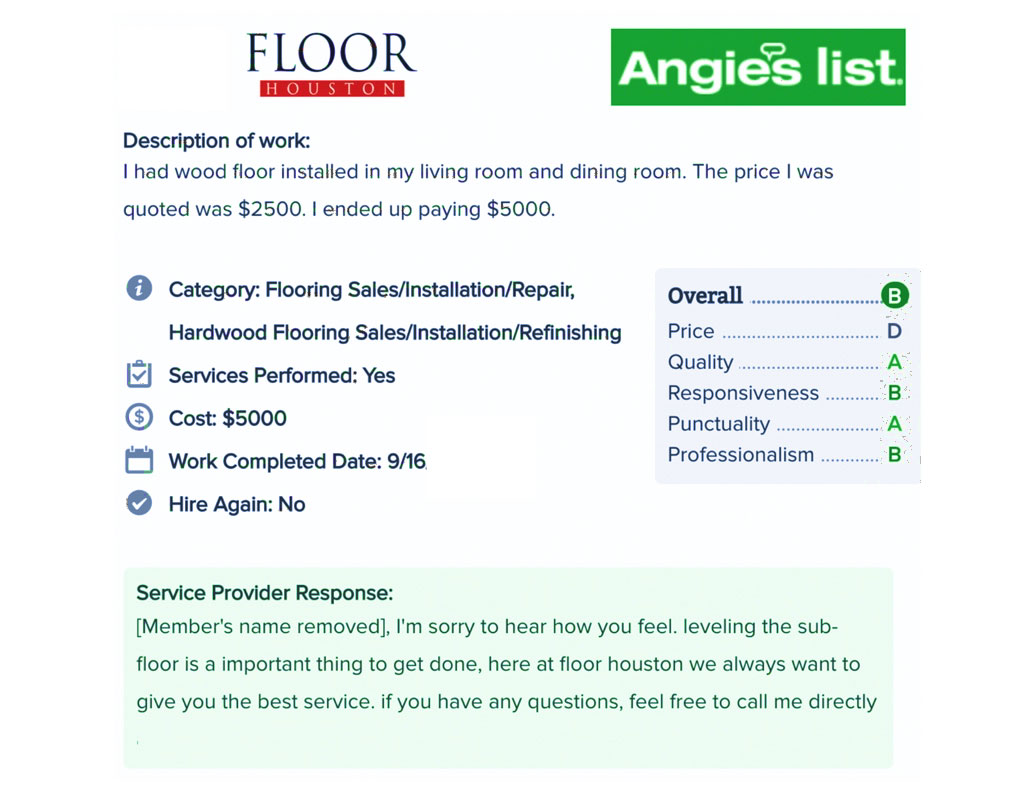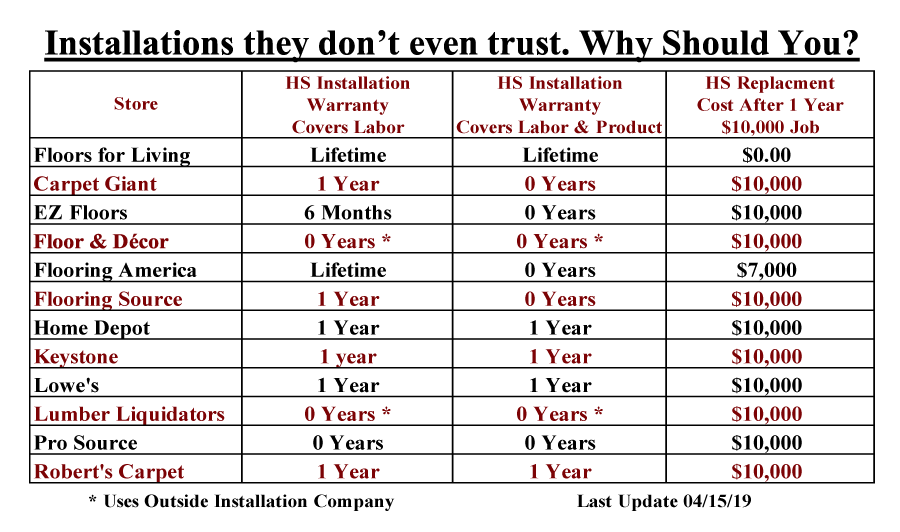1. Choose Engineered Hardwood and not solid wood for humid climates. Engineered Real Wood is especially important on concrete to avoid warpage, splits, and expensive replacements.
2. Protect your floor and your money from moisture coming through your concrete by selecting an adhesive that has Moisture Protection/Mitigation of up to 90% RH and 10lbs. The average protection only gives 3 lbs. of protection which will increase the odds by 300% of moisture coming up through your concrete and damaging your floor
3. For longer wood floor happiness choose a floor that is harder to dent and gouge. Choose a floor with a higher Certified Janka Rating. Most manufacturers, box stores, and chain flooring stores display FALSE Janka ratings that are based on solid wood and not Certified Tested engineered wood. We have found hickory floors at a box store that tested out at 849 compared to the listed Janka rating of 1820. Customers who purchase this floor will be very disappointed in its performance. Only Floors for Living tests all of their floors on a Certified Janka machine. We will even test our competition’s floor to make sure that you make Your Best-Educated Choice. Simply bring in a few boards to our Missouri City location and we will provide the results for free.
4. Don’t purchase an unfinished floor and have to settle for a job-site finish. Factory finished floors use special drying techniques which make them up to 7 times more durable. Their finish is so good that companies like Shaw give customers a lifetime finish warranty compared to the normal 1-year warranty given on a job site-finished floor. When it needs to be refinished, Home Advisor says customers can expect to over $3.00 per square foot. Besides the extra future expenses, companies that do refinish guarantee you in writing that you may have circular marks, air bubbles, and tiny flecks in their finish
5. Request that installers use the new industry standard Topical Moisture Proof Installation Method to protect the cut edges from water damage caused by spills and water from outside doors. Failure to use this may result in the manufacturer’s warranty being voided. Protect your investment.
6. When it comes to a cushion under your wood choose a breathable moisture barrier. Non-breathable moisture barriers cause mold and mildew under your floor. Floors for Living uses a breathable moisture barrier and cork for better sound reduction and protection
7. Don’t sign an Open Order. Knowing what you will pay prior to the installation starting is superior to someone else deciding what you will pay after it started. People under the pressure of having their home being torn up will be more willing to agree to large additional charges. Signing an order with the possibility of the price changing once the installation has begun is like signing a blank check for a stranger to fill in at a later date.
Demand a Closed Order – an order that cannot change once the job begins.
8. Don’t accept an Inferior Installation Warranty. Installation warranties that cover ONLY the initial labor can cost you 80% of your original investment if there is a problem. Demand a warranty that covers both the installation and the product needed to fix installation-related problems.
9. Don’t pay extra for Float or Leveler to reduce highs and lows on your floor once the job begins. It is part of a normal installation. It is used on 95% of wood, luxury vinyl, and laminate installations and should be part of the originally agreed-upon price. Many stores, including the box stores, add on an additional cost of around $1.75 per square foot after the job begins. This is added on if there is a change of only ¼” in the floor height. The Angie’s List review to the right shows a store that charged $2,500 extra or $6.66 extra per square foot on a 375-sf installation after the job began. It was hidden in the sales process by talking about a price per bag. For most stores, It isn’t how much float you need to do the job correctly but rather how much they need to make up their desired profits. Demand a price that includes the Float or Leveler and does not change once the job begins.

10. Don’t accept a Short-Term Installation Warranty. Improper installation issues will show up during the seasonal changes of heat and humidity. It can take up to 2 years or longer to expose installation shortcomings. Short-Term Installation Warranties can expose you to unneeded financial risks. The length of a company’s installation warranty reflects their confidence of not having to pay for installation problems in the future. Their confidence or lack thereof is created by the quality of the products and methods used in the installation.

